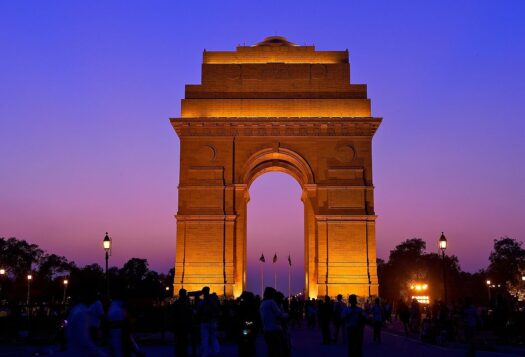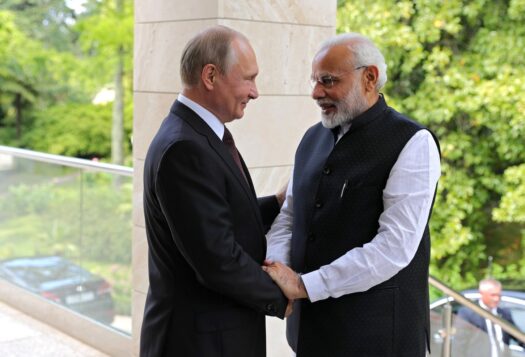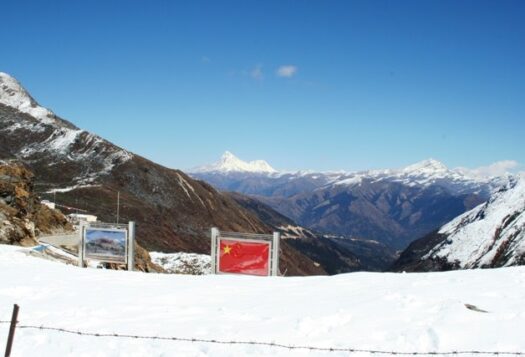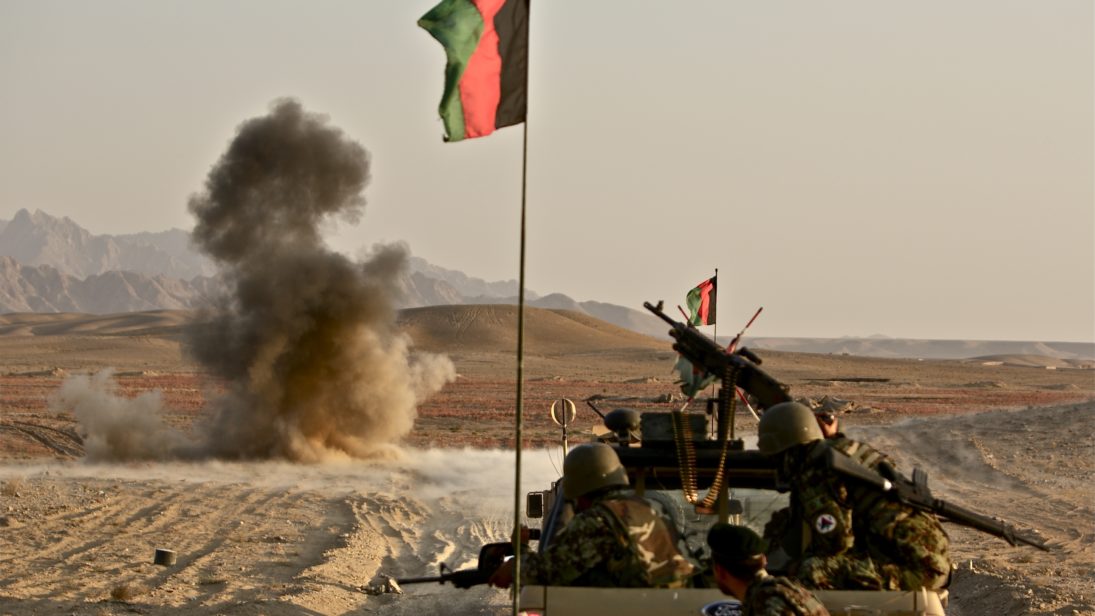
2017 was a bloody year for Afghanistan. The Taliban launched a deadly offensive while the Islamic State-Khorasan Province (ISKP) grew stronger. In light of these emerging challenges, President Trump announced the new American strategy in Afghanistan, including a troop surge and a recommitment to defeating the insurgency. However, in response to Trump’s new strategy, several regional powers began to form a bloc against the United States’ vision for the future of Afghanistan. Consequently, neither the National Unity Government (NUG) nor the United States were able to achieve a regional or global consensus on the way forward in the country. This will have negative ramifications on the fight against terrorism—and, ultimately, the prospects for peace—in Afghanistan.
Resurgent Taliban and Rising Terrorist Violence
In 2017, the Taliban expanded its direct territorial control of Afghanistan and stepped up its attacks against military and government assets. They now claim to control 34 districts in full and contest another 167 in 16 provinces across the country. The Long War Journal, whose report paints “a dire but realistic picture of the security situation across the country,” agrees that the Taliban’s claims are not exaggerated.
In April, the Taliban carried out one of its most high-profile attacks since 2001, on the 209th Shahin Military Corps in Mazar-e Sharif, killing 135 servicemen and forcing the defense minister and the army chief of staff to resign. This occurred only a week after the Taliban announced their 2017 spring offensive, Operation Mansouri. The operation was intended to display the group’s strength in the wake of Mullah Mansour’s 2016 assassination that had caused the group to splinter. As a result of the operation, nine major suicide attacks took place in Kabul between March and October and over a dozen districts fell to the Taliban across the country. As part of Operation Mansouri, the Taliban began to increasingly attack high-profile hard targets. They orchestrated onslaughts on two of the nine Afghan Military Corps (Balkh and Kandahar) and attacked three important military bases (in Paktia, Ghazni and Kandahar). As 2017 draws to a close, the Taliban continues to signal its willingness to fight, even training and equipping special forces to operate in cells known as the Red Units, to be used for special operations and offensives of high-value targets or strategic territory. Given the current strength of the Taliban, it is certain that the group will remain a major threat for the Afghan government in 2018.
Beyond the Taliban, the ISKP is yet another threat to security in Afghanistan. The group has been growing in strength since the Islamic State (IS) launched this local branch in January 2015. It has taken to targeting Shia mosques, with the New York Times reporting that at least 84 Shias have been killed and over 200 injured as of mid-October. Since then, at least two more such attacks have taken place. During the month of Moharram, a Shiite holy month, the government was so worried about the security of mosques that it resorted to the dangerous option of arming locals to provide security. Although the Afghan National Defense and Security Forces (ANDSF) and U.S. airpower have inflicted major blows to ISPK during 2017, it still remains a growing concern in Afghanistan with the potential to pose serious challenges for the government. However, since the group lacks a popular base in the country, the ANDSF could mitigate the threat posed by ISKP in 2018 if they continue to target the group.
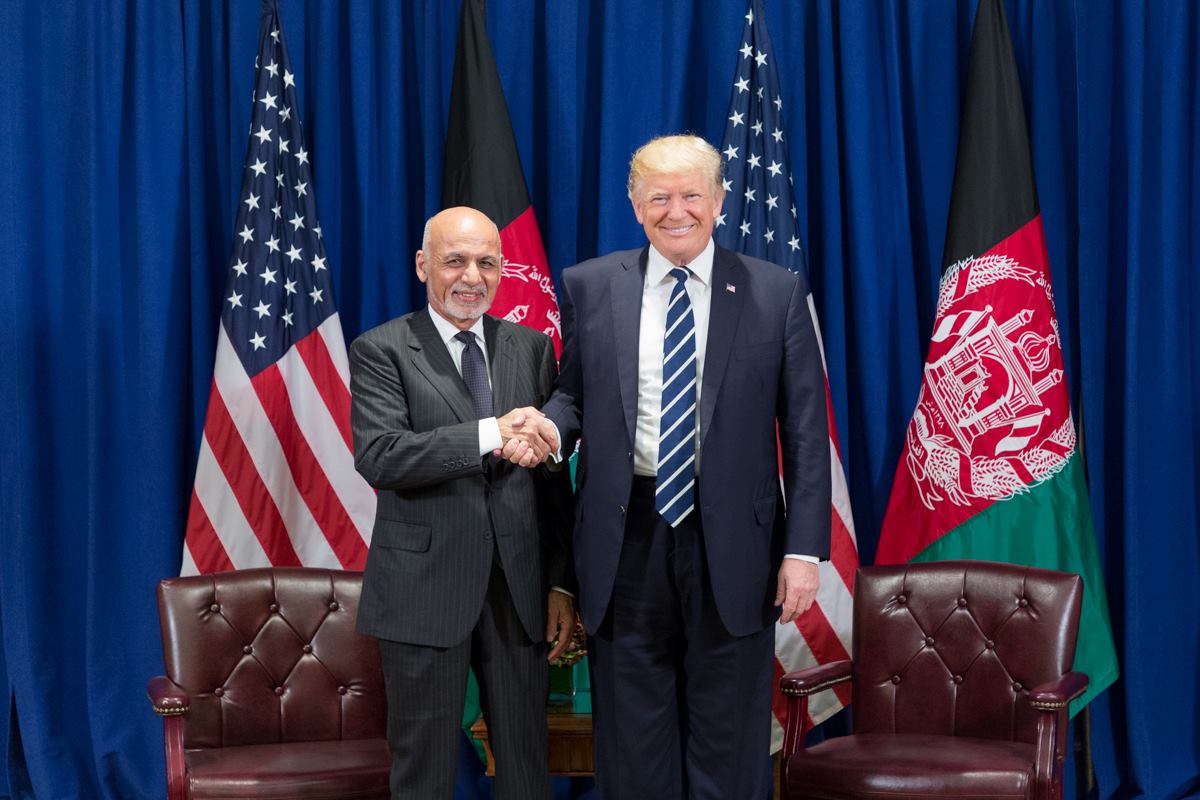
New U.S. Strategy for South Asia
After months of deliberating, U.S. President Trump finally announced the United States’ new strategy in Afghanistan and South Asia on August 21. It was exactly what the NUG wanted: Trump committed the United States to cracking down on Pakistan and supporting the Afghan government and military in their fight against the Taliban. In his speech outlining the strategy, Trump implicitly dubbed Pakistan a state sponsor of terrorism, stating the country “often gives safe haven to agents of chaos, violence, and terror.” Since the announcement, the United States has conveyed a tone of seriousness and at times hinted that it might take unilateral action to force Pakistan to eradicate terrorist safe havens on its soil. At the same time, Trump said the strategy would be guided by “conditions on the ground”—not “arbitrary timetables.” Since then, he has approved a troop surge of 4,000, a plan to modernize the Afghan air force, and intensified drone strikes along the Afghanistan-Pakistan border areas to turn the tide in Afghanistan.
Although Trump’s new strategy was unanimously welcomed in Afghanistan as a clear demonstration of the United States’ resolve, it stirred criticism in the region. Pakistan, Iran, Russia, and China expressed their opposition, emerging as a quasi bloc against the increasingly cozy grouping of India, Afghanistan, and the United States. Pakistan was uniquely irked by India’s inclusion in the speech, in which Trump singled out Pakistan’s decades-old rival to assist with economic assistance and development in Afghanistan. Pakistan has always feared a larger role for India in Afghanistan, asserting that India would undoubtedly use its presence in the country against Pakistan. Iran, Russia, and China are unhappy that they were not included in Trump’s vision for the U.S. endgame in Afghanistan. In any case, all four powers—each a rising regional hegemon—have condemned the plan on the basis of their opposition to a greater U.S. presence in their neighborhood in general.
The new strategy has turned Afghanistan into an island-ally of the United States and India. Given the long history of external actors supporting militants in Afghanistan to further their strategic interests, the NUG fears that the formation of this coalition could lead to increased support flowing to the Taliban.
Peace Talks: Challenges Ahead
The Taliban will not exchange their current power, territorial control, and regional support for a peace agreement in which they will be reduced to a political party in the best scenario, as evidenced by the large number of unsuccessful peace talks that took place in 2017. Significantly, the Quadrilateral Coordination Group (QGC)—a group comprised of Afghanistan, the United States, China, and Pakistan—held fruitless talks in Oman in October, but it is unclear if a delegation from the Afghan Taliban attended.
On the other hand, Moscow—which has, along with Iran, consistently been excluded from the QGC—hosted six-party talks on Afghanistan in February, bringing together representatives of India, Pakistan, Iran, China, and Afghanistan to lead a regional effort for peace in Afghanistan. Russia also hosted a peace conference on Afghanistan in April in which 11 states, minus the United States, attended. Moscow seems to be pushing forward with its own talks, which are always unattended by the United States, as a reaction to its exclusion from the QGC. Peace talks in the future will likely remain futile unless the Afghan government and the United States shift the tide militarily, particularly given that due to their frustrations with the Trump strategy, Pakistan, Russia, China, and Iran may choose to play spoiler in a U.S.-orchestrated peace process.
Moving Forward
Going into next year, the NUG faces a challenging security situation, a region filled with antagonized actors, and a stagnant peace process. Importantly, parliamentary and district council elections are scheduled for July 2018 and the NUG will have to make important decisions about 2019 presidential elections within the next year. All in all, 2018 will be a critical juncture for Afghanistan.
Editor’s note: This is the first piece in our 2017: Year in Review series. In this six-part series, our contributors assess the most significant domestic and foreign policy developments in Afghanistan, Pakistan, Bangladesh, India, Sri Lanka, and Nepal in 2017 and how these developments will impact the countries and the region in 2018. Read the entire series here.
***
Image 1: Al Jazeera English via Flickr.
Image 2: The White House via Flickr.
